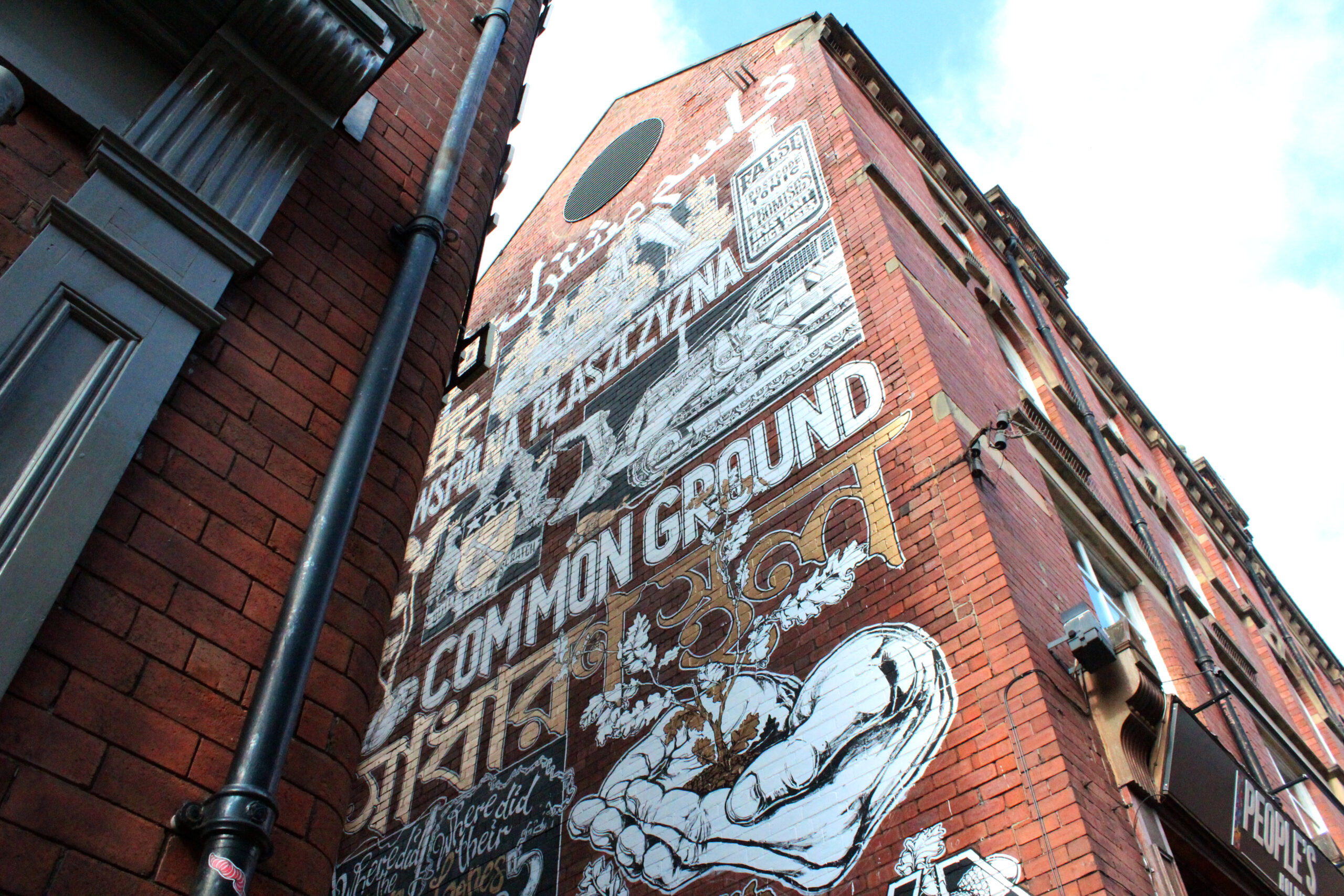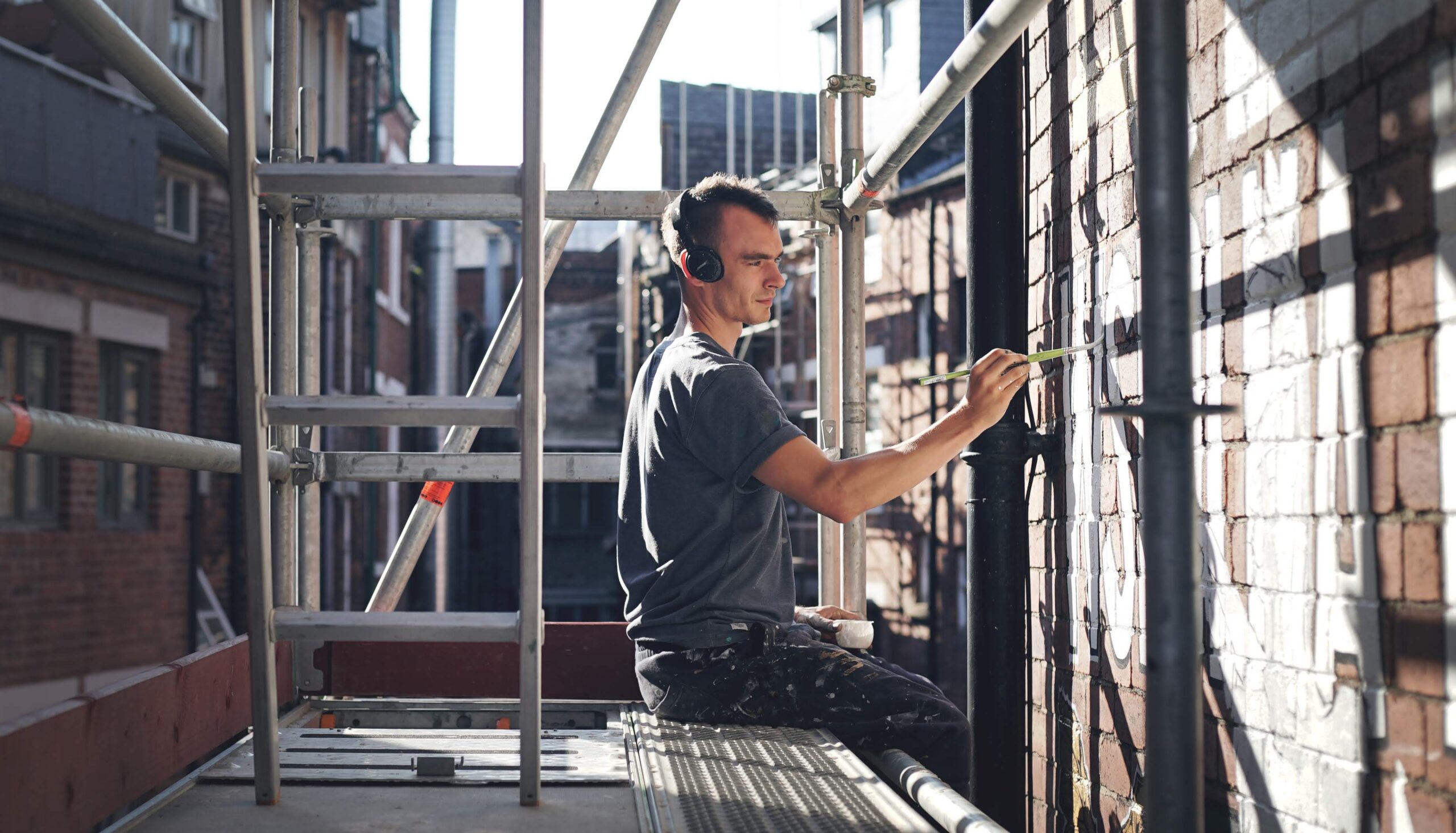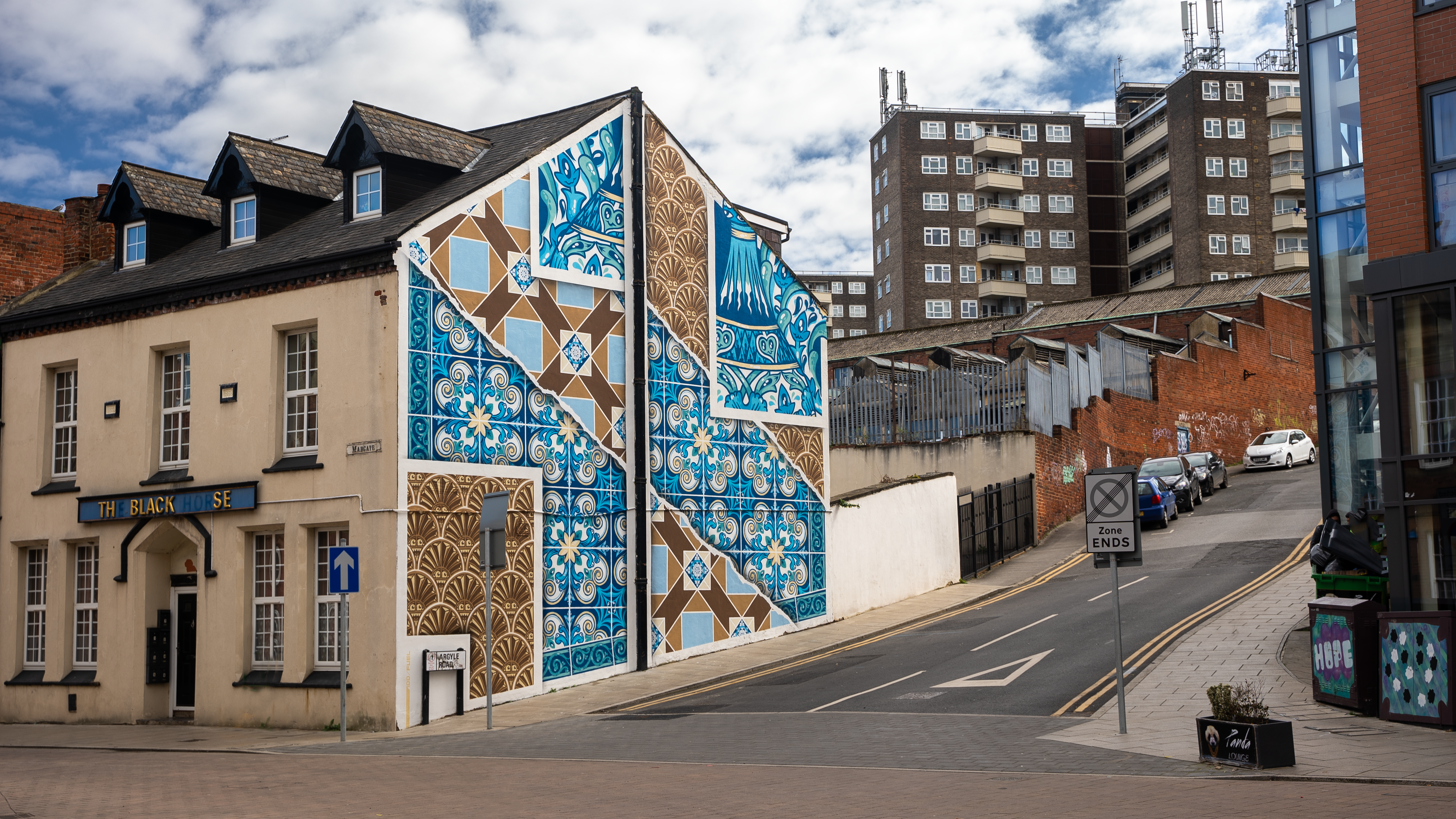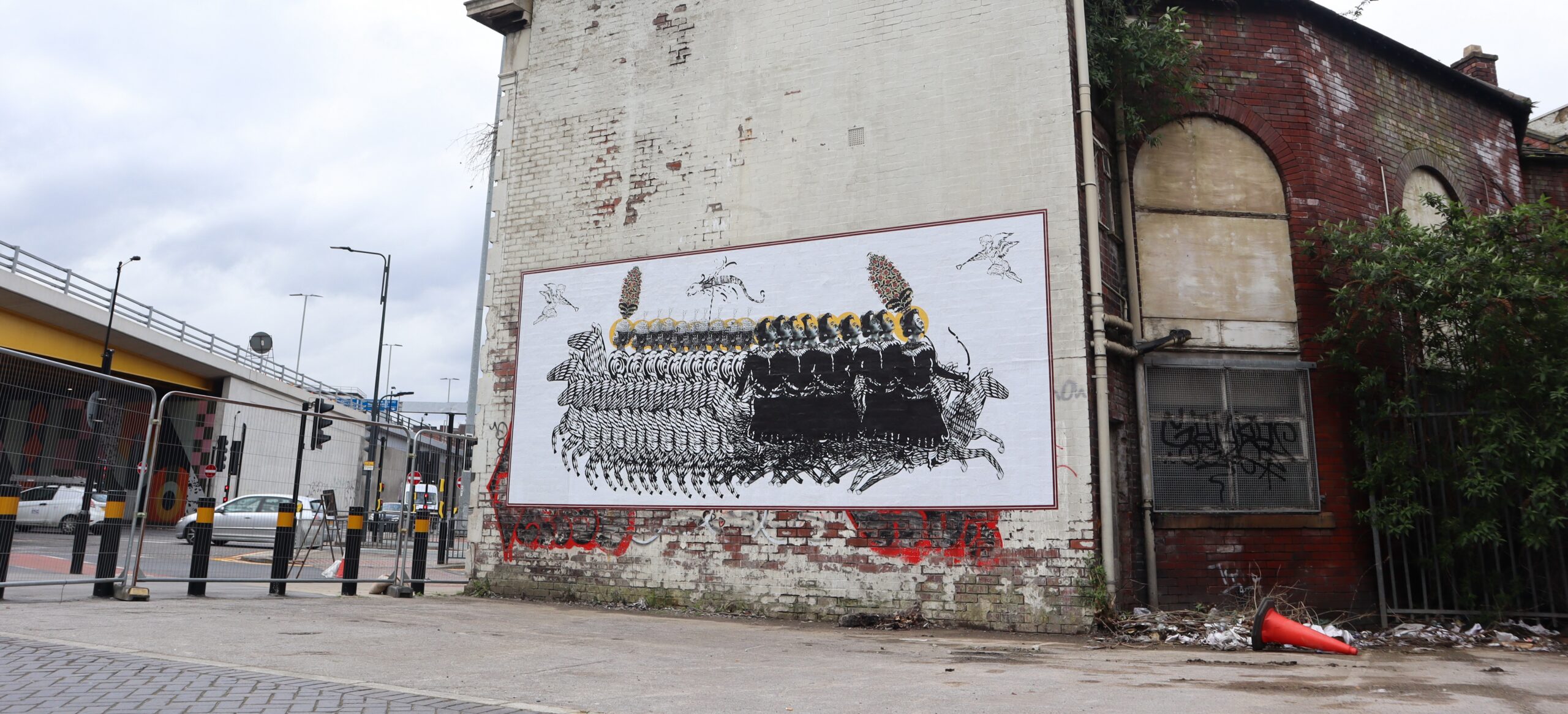Mike Winnard’s Common Ground piece takes pride of place on Harper Street, overlooking Kirkgate - the oldest street in Leeds.
The 15m mural is inspired by the phrase ‘Common Ground’, with the artwork depicting the two words in the numerous languages spoken in Leeds. It also encapsulates local, historical, and cultural iconography – such as flags, plants, and animals – inspired by research and conversations around the unity of human experience.
Common Ground is part of our citywide public art initiative A City Less Grey and was fully funded by LeedsBID (Leeds Business Improvement District). The project aims to animate the city and incorporate works of art onto and into Leeds’ buildings and streets.
On completion of the artwork, Mike told us a little bit more about the project and how he found the process of creating the mural.
What was your inspiration and overall concept for the piece you created for A City Less Grey?
The piece is a personal reflection on the theme of public space, using the history in and around Kirkgate as a lens. The languages shown are some of the most widely-spoken in Leeds, and the various imagery was inspired by lots of contextual research. I chose the phrase ‘Common Ground’ for its historical meaning of publicly-owned land, and the double meaning of both shared physical space and of a middle-ground between different people. My overall hope was to create something which can be read in lots of ways, without having a single blunt message.
Can you tell us a little bit about the process of producing the mural?
Sure; the project started with lots of archival and contextual research, looking into the history of the area from ancient times onwards, hoping to uncover some overarching themes as well as smaller interesting anecdotes. After this I started looking to tie some historical aspects with contemporary issues, and playing with different ways of doing this visually. Having arrived at a rough idea, I started approaching different people for the translations; avoiding professional translation agencies I looked to poets, academics and local residents instead. Once I’d gathered all of the imagery I wanted to use, I spent a long time experimenting with compositions and sequencing, to find a way of telling a subtle narrative within the piece, without being overbearing.
What kind of tools did you use to create the mural and do you have any favourites?
I marked everything out with chalk and then used masonry paint for the base-coat. After that a combination of all-surface exterior gold paint and UV-resistant acrylic inks for all the details. The Rustoleum gold paint is amazing, and so are the Molotow One4All acrylic inks – shoutout to ArtOfficial on Kirkgate for the inks!
What was the hardest part of the painting?
The wall is in pretty bad condition with lots of the mortar between the bricks gone, so there are big gaps between each brick. Getting neat lines and teasing all the paint into those gaps to give a clean finish was really time-consuming.
What is your favourite thing about working in the public realm?
It’s lovely working outside, especially somewhere lively and having all the noises, sights and dramas of the street as a background soundtrack to work to.
Has being involved in A City Less Grey had a positive impact on your own practice?
Definitely! Having the time and resources to really thoroughly research, develop, refine and execute a large-scale piece is a real luxury and it’s been a great experience that I’ve taken a lot from.







